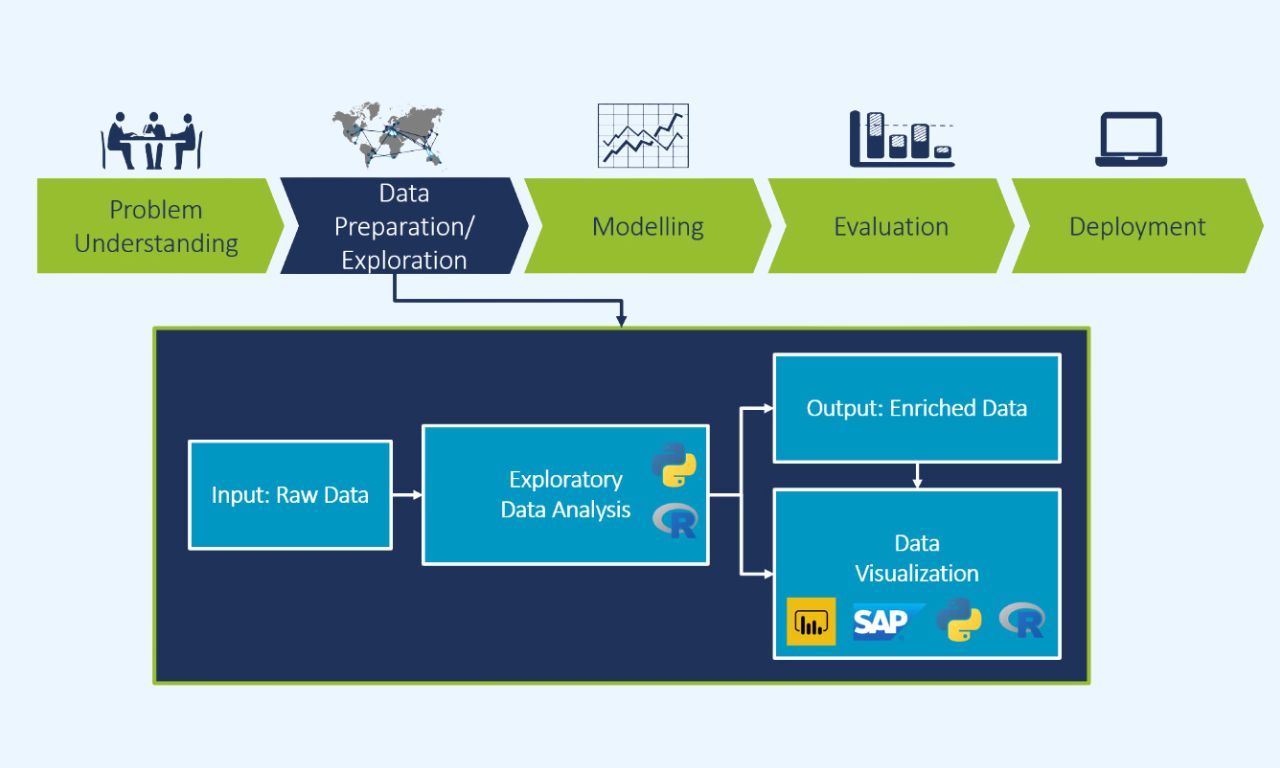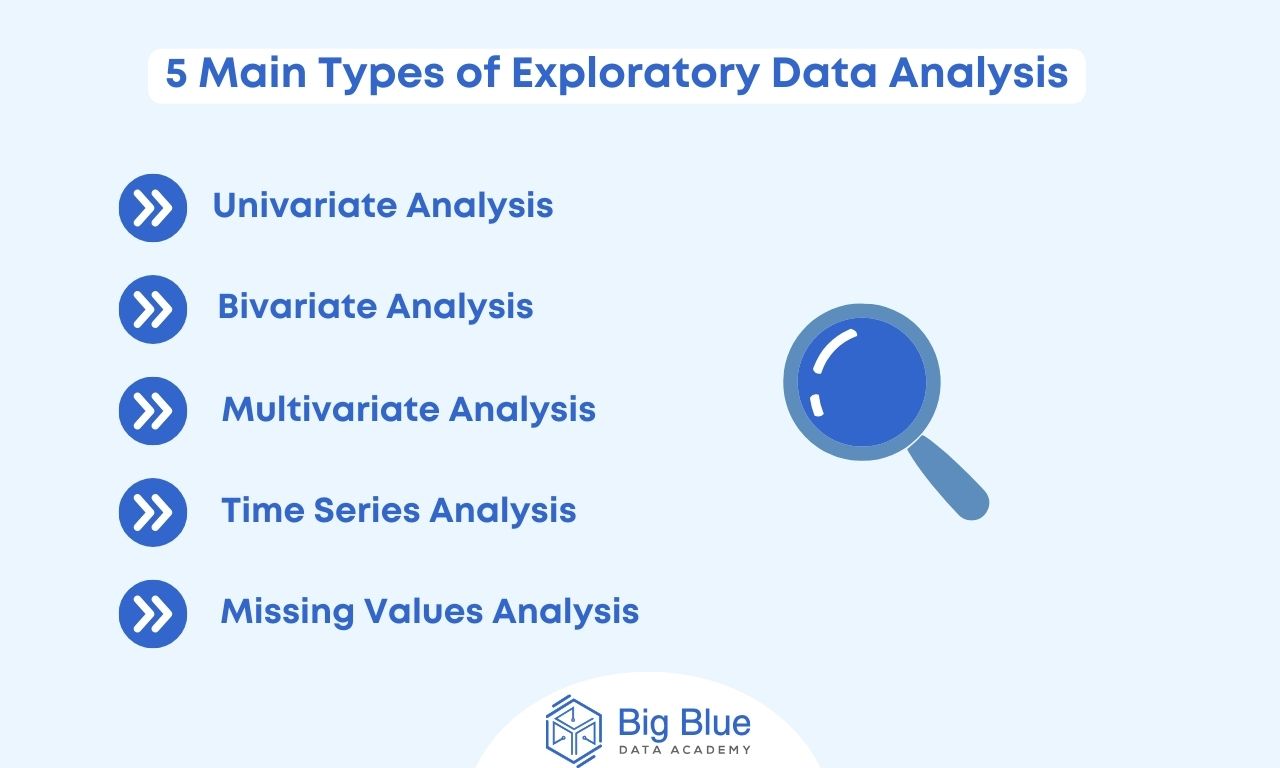Exploratory Data Analysis: Definition, Significance & Types
Before data scientists delve into the process of modeling their data, they need to identify the characteristics of their dataset, uncovering potential patterns and trends.
Exploratory Data Analysis (EDA) is a crucial step in formulating hypotheses and guiding subsequent modeling and analysis.
So, in today's guide, we'll explore:
- What is Exploratory Data Analysis (EDA)?
- Why is it important?
- What are its main types?
Let’s start with the basics.
What is Exploratory Data Analysis and Why is it Important?
Exploratory Data Analysis (EDA) is an approach to analyzing and visualizing datasets to identify their key characteristics.
The primary goal is to understand underlying patterns and relationships in the data, helping to uncover trends, outliers, and anomalies.
Exploratory Data Analysis is one of the initial steps in the data analysis process, playing a fundamental role in formulating hypotheses and guiding subsequent modeling and analysis.

Data scientists can use EDA to ensure data quality, producing results that are valid and applicable to a range of business goals.
Exploratory Data Analysis is essential, as it can help a data team answer various questions about typical deviations and categorical variables.
The insights gained can then be utilized for data modeling and machine learning purposes.
Developed by American mathematician John Tukey in the 1970s, Exploratory Data Analysis techniques continue to be widely used in the data exploration and hypothesis formulation process.
Now, let's dive into the main types of Exploratory Data Analysis.
5 Main Types of Exploratory Data Analysis
The 5 main types of Exploratory Data Analysis are the following:

Type #1: Univariate Analysis
The simplest form of EDA is univariate analysis where data is analyzed with a single variable.
It mainly aims to describe data and find patterns rather than establish causation or relationships.
Techniques include histograms, bar graphs, etc.
Type #2: Bivariate Analysis
To continue with, bivariate analysis involves exploring relationships and connections between variables.
It helps find correlations, relationships, and dependencies between pairs of variables.
Questions addressed include:
- The correlation between two features
- The impact of lower values in one variable on another
- The nature of the relationship between two features.
Type #3: Multivariate Analysis
The third type of EDA is multivariate analysis which extends bivariate analysis to include more than two variables.
It focuses on understanding complex interactions and dependencies between two or more data variables.
Some of the techniques that are employed include heat maps, scatter plots, etc.
Type #4: Time Series Analysis
Time series analysis analyzes a sequence of data points collected over time.
Essentially, it records data points at regular intervals for a defined period.
Type #5: Missing Values Analysis
Missing values analysis addresses the common issue of missing values in datasets, impacting evaluation validity and reliability.
It investigates the extent of missing data and its potential implications on analyses.
Ramping Up
In summary, we've discussed what Exploratory Data Analysis is, why it's crucial, and the main types and techniques used.
Data scientists leverage EDA for in-depth analysis and exploration of datasets, aiming to identify their main characteristics and make informed hypotheses.
Data science continues to be a promising profession with ample opportunities for growth and advancement.
So, if you are intrigued and want to learn more about the fascinating world of data analytics and data science in general, follow us for more educational articles!


.jpg)